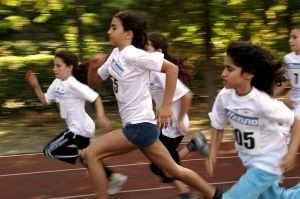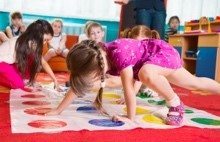In this 3-part series we will explore how more play, creative expression, and movement can lead to more cognitive development. The link from body to brain is powerful, so getting kids to move more and study a little less throughout the day may seem counterintuitive, but it may actually lead to better grades and even improve behavior!
In part 3 we will discuss how specific forms of exercise affect brain development. If you missed them, see Part 1 and Part 2.
The idea of stepping back from academic work with an activity break to improve performance is understandably counterintuitive, but the evidence is overwhelming that this will indeed result in improvements, both in terms of being physically and mentally renewed, but also by directly increasing the processing power of the brain.
Dr. John Ratey has made an impressive case for this in his important book, Spark: The Revolutionary New Science of Exercise and the Brain (2008). He details the results of the latest research in neural science for how and why exercise directly improves cognitive ability.
One of the star players of the “body/brain connection” is a protein called brain-derived neurotrophic factors, or BDNF. BDNF builds and maintains the brain’s cell circuitry, and is abundantly found in the hippocampus, the part of the brain involved with learning and memory. According to Ratey, it “nourishes neurons like fertilizer” (p. 39).
An enriched environment increases synaptic (as well as myelin) plasticity resulting in more neural connections in the brain. BDNF has been found to enhance synaptic plasticity by increasing signal strength and improving the function and longevity and health of neurons (Ratey, 2008, p. 40). With exercise BDNF is “unleashed,” according to Ratey (p. 51).
Different types of exercise have different effects on the brain that complement each other.

Aerobic exercise can improve executive function, or the ability to manage cognitive processes such as working memory, reasoning, problem solving, task switching, inhibition, and planning and execution.
Perceptual-motor tasks are the foundation of coordination as well as the fundamental and complex movement skills. It has been shown that sensory rich coordination activities can significantly increase BDNF production in the cerebellum, which is responsible for motor movements, but has also been linked to thoughts, attention, emotions, and social skills (Ratey, 2008, p. 41).
Ratey concludes that aerobic exercise elevates neurotransmitters, increases blood flow and spawns new cells, while complex skill development “puts all that material to use by strengthening and expanding networks.”
As the movements increase in complexity so too does the development of synaptic connections. This was evidenced by a study highlighted by Ratey (p. 56) in dancers, that showed moving to an irregular rhythm, as opposed to a regular rhythm, improved brain plasticity to a higher degree. And most importantly, although these new neural circuits were created as a result of increased movement, they can be recruited by the brain for mental processing as well (p. 56).

As you can see play, exploration, movement, and exercise are key, not only to health and fitness, but to maximizing children’s ability to learn and succeed both in and out of the classroom.
We’d love to hear from you. What are some of your experiences and strategies in incorporating more movement throughout the day with your kids? How can we as a society do more to get this message across and make systemic changes?
Author: @craigvalency
Believe it or not, breakfast is a little different today! We had 2 eggs over medium with salt, pepper, and turmeric, but the sweet potato hash was made with purple sweet potatoes, no bacon (that’s a crime), sautéed baby kale, chard, and spinach, sautéed cherry tomatoes & fresh avocado – all drizzled with olive oil. Coffee and cod liver oil of course to round out this important meal!
References
Ericsson, I., & Karlsson, M. K. (2012). Motor skills and school performance in children with daily physical education in school – a 9-year intervention study. Scand J Med Sci Sports, 24(2), 273-278. doi:10.1111/j.1600-0838.2012.01458.x
Gallahue, D., & Cleland Donnelly, F. (2003). Developmental Physical education for all children (Fourth ed.). Champaign, Illinois: Human Kinetics.
Graham, G., Holt/Hale, S. A., & Parker, M. (2013). Children moving: A reflective approach to teaching physical education (9th ed.). New York, NY: McGraw-Hill.
Musolf, D. (2014, February 19). Does outdoor play make kids smarter? – San Jose Mercury News. Retrieved from https://www.mercurynews.com/bay-area-living/ci_25181071/does-outdoor-play-make-kids-smarter?source=infinite-up
Ratey, J., & Hagerman, E. (2008). Spark: The Revolutionary New Science of Exercise and the Brain (First ed.). New York, New York: Little, Brown and Company, Hachette Book Group.
Rosenbaum, D. A., Carlson, R. A., & Gilmore, R. O. (2001). Acquisition of intellectual and perceptual-motor skills. Annual Review of Psychology, 52(1), 453-470. doi:10.1146/annurev.psych.52.1.453
Schwartz, T., Gomes, J., & McCarthy, C. (2010). The way we’re working isn’t working: The four forgotten needs that energize great performance. New York, NY: Free Press.